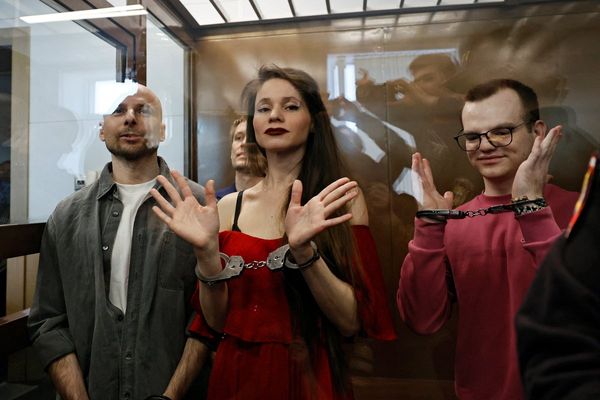
Tye Brady’s interest in robotics began in the 1970s when Star Wars was released in theaters and Luke Skywalker’s beloved robotic sidekick, R2-D2, caught his youthful imagination.
Inspired by the fictional relationship between man and machine, Brady studied aerospace engineering at Boston University and earned a master’s degree in aeronautics and astronautics engineering at the Massachusetts Institute of Technology, where he also worked through the 1990s.
Over the course of a career that has spanned several decades, Brady’s robotics work progressed alongside technology innovations: Machine learning advancements helped hone computer vision, lower cost sensors and actuators improved robotic mobility, and most recently, generative artificial intelligence advancements have improved robot testing, monitoring, and automation.
“I’m 40 years in and we’re just starting to get there,” says Brady, who has served as chief technologist of Amazon Robotics for nearly a decade. “Generative AI is here, and finally, after all these years, I feel like we have the mind and body of robotics coming together.”
Generative AI is playing a crucial role in the future development of Amazon’s warehouse robotics, a fleet that already totals more than 750,000 in the U.S. market to help workers identify, pack, and ship millions of online orders each day. A few examples of generative AI at work include trajectory planning for robotic arms to better understand the degrees of movement and what sequence is most optimal to grab items. There’s also the use of generative AI to create visual packages and conceptualize how robotics can pick up atypical package sizes.
“We're using generative AI in just about everything that we're doing inside of robotics,” says Brady.
Generative AI systems are also being used to serve as a traffic controller, keeping an eye on how to efficiently move devices across the warehouse floor. The technology is also used for damage detection, to help Amazon better understand the flow of how goods should be stored throughout the fulfillment center, and AI code generation tools are being used by Amazon Robotics' software engineers.
The company’s Shreveport, Louisiana fulfillment center is where Amazon is most forward-thinking when it comes to reimagining logistics. This location has ten times more robotics than the rest of Amazon’s fulfillment centers, including the autonomous mobile robot Proteus, Sparrow’s robotic arms, and Sequoia, which uses AI, robotics, and computer vision to retrieve inventory from the floor and deliver those goods to a workstation where humans will pick out items from the robotics-delivered crates for a customer order.
Shreveport can process customer orders 25% faster and at a 25% lower cost than other buildings in Amazon’s system, according to the company. Brady says the environment is also safer for employees.
But adding robotics and creating more automation will also impact jobs. A study out of MIT and Boston University found that for every robot added per 1,000 workers in the U.S., wages would decline by 0.42%. More robots also led to fewer workers, the researchers say, and certain industries, like automotive, and regions like the Rust Belt and Texas are most at risk of disruption.
Amazon acknowledges that jobs have and will continue to change, but also says technological progress is beneficial to workers. Rather than have humans move heavy, 50-pound boxes, those risky and laborious tasks can be handed off to robots. “I want to automate every single repetitive, mundane task that we have,” says Brady.
Amazon also points to a 2020 pledge to invest $1.2 billion through 2025 on upskilling, which includes robotics apprenticeships programs in Shreveport and other buildings that feature robotics automation. Those that graduate one of the programs can see a 40% bump in pay, the company says. Amazon has hired more than 9,000 safety experts for robotics and other automated technologies and in 2024, put $750 million toward enhancing the company’s safety systems.
Frontline workers also play a crucial role in the development of Proteus and other new robotics, along with product developers, manufacturing engineers, and safety engineers. Brady says before any robotic system is designed and deployed, Amazon always begins with the question: What is the problem we are trying to solve?
After settling on that desired outcome, a prototype is built in a lab, then tested on one quarter of one floor of a fulfillment center. Amazon iterates the design of the prototype as it works through friction points, and as the project evolves it will expand to a full floor, and then an entire fulfillment center. If all goes well, robotic innovations may be deployed more broadly across additional locations.
As robotics breakthroughs continue to advance, Brady says the onus on ensuring these systems work harmoniously with the workforce ultimately rests with technologists.
“We cannot put the burden onto the person to have 18 degrees in order to figure out how to use the machine,” he added. “We have to make our machines very, very simple to use.”
John Kell
Send thoughts or suggestions to CIO Intelligence here.







